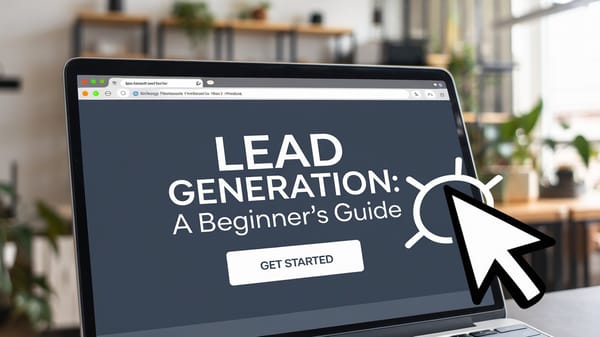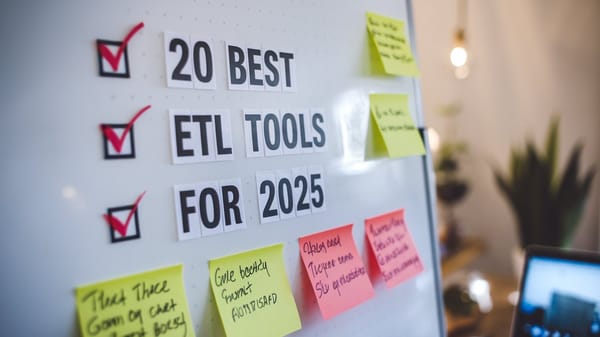How to Introduce Yourself In an Email (Correctly)

In today's fast-paced digital world, email remains a cornerstone of professional communication. Whether you're reaching out to a potential employer, a new colleague, or a business partner, crafting a compelling email introduction is crucial for making a strong first impression. A well-written introductory email can set the tone for a positive relationship, establish trust, and open doors to new opportunities.
The key to a successful email introduction lies in its structure and content. A compelling subject line is your first opportunity to capture the recipient's attention. It should be clear, relevant, and engaging to ensure your email stands out in a crowded inbox. Once opened, the email should begin with a proper salutation that sets the right tone for the communication, followed by a concise self-introduction. This introduction should provide just enough context for the recipient to understand who you are and why your message is important.
Using simple and professional language is essential to ensure clarity and ease of understanding. Research indicates that emails written at a third-grade reading level are significantly more likely to receive a response. Additionally, personalizing your email by mentioning shared interests or mutual connections can make it more engaging and relevant to the recipient.
You can also visit Oncely.com to find more Top Trending AI Tools. Oncely partners with software developers and companies to present exclusive deals on their products. One unique aspect of Oncely is its “Lifetime Access” feature, where customers can purchase a product once and gain ongoing access to it without any recurring fees. Oncely also provides a 60-day money-back guarantee on most purchases, allowing customers to try out the products and services risk-free.
Oncely are hunting for the most fantastic AI & Software lifetime deals like the ones below or their alternatives:

Table of Contents
- Crafting a Compelling Subject Line
- Importance of Subject Lines in Email Introductions
- Characteristics of Effective Subject Lines
- Strategies for Crafting Subject Lines
- Examples of Compelling Subject Lines
- The Role of Subject Lines in Professional Contexts
- Impact of Subject Lines on Email Deliverability
- Conclusion
- Writing a Professional Self-Introduction
- Understanding the Purpose of a Self-Introduction Email
- Key Components of a Self-Introduction Email
- Professional Greeting
- Clear Introduction and Purpose
- Personalization and Relevance
- Structuring the Content
- Conciseness and Clarity
- Use of Professional Language
- Enhancing Engagement and Response
- Call to Action
- Professional Sign-Off
- Common Mistakes to Avoid
- Overloading Information
- Lack of Personalization
- Unclear Purpose
- Personalizing the Email and Adding a Call to Action
- Importance of Personalization in Email Introductions
- Techniques for Personalizing Emails
- Crafting an Effective Call to Action (CTA)
- Balancing Personalization and Professionalism
- Measuring the Impact of Personalization and CTA
Crafting a Compelling Subject Line
Importance of Subject Lines in Email Introductions
Subject lines are the first point of contact in email communication, significantly influencing whether an email is opened or ignored. According to a study by Convince & Convert, 35% of email recipients open emails based on the subject line alone. This statistic underscores the critical role subject lines play in email engagement, especially when introducing oneself.
Characteristics of Effective Subject Lines
Effective subject lines are concise, clear, and relevant. They should convey the email's purpose without overwhelming the recipient. Research by Campaign Monitor suggests that subject lines with 6-10 words have the highest open rates. This finding highlights the importance of brevity in crafting subject lines. Additionally, subject lines should be personalized and specific to capture the recipient's attention. Personalization can increase open rates by 26%, as noted by Experian.
Strategies for Crafting Subject Lines
-
Use Action-Oriented Language: Action-oriented language encourages the recipient to engage with the email. For instance, using verbs like "Discover," "Learn," or "Join" can prompt action. According to HubSpot, subject lines that include action verbs can increase open rates by 20%.
-
Incorporate Personalization: Personalizing subject lines with the recipient's name or company can significantly enhance engagement. A study by Yes Lifecycle Marketing found that personalized subject lines have a 50% higher open rate than non-personalized ones. This approach makes the email feel more relevant and tailored to the recipient.
-
Create a Sense of Urgency or Curiosity: Subject lines that imply urgency or curiosity can drive higher open rates. Phrases like "Limited Time Offer" or "You Won't Believe What Happened" can entice recipients to open the email. Litmus reports that urgency in subject lines can increase open rates by up to 22%.
-
Avoid Spam Triggers: Certain words and phrases can trigger spam filters, reducing the likelihood of the email reaching the recipient's inbox. Words like "Free," "Guaranteed," and excessive use of exclamation marks should be avoided. Mailchimp provides a comprehensive list of spam trigger words to avoid in subject lines.
-
Test and Analyze: A/B testing different subject lines can provide insights into what resonates with the audience. By analyzing open rates and engagement metrics, one can refine subject line strategies. Optimizely suggests that continuous testing and analysis can improve email performance by 30%.
Examples of Compelling Subject Lines
- "John, Let's Connect: Opportunities for Collaboration"
- "Unlock Exclusive Insights: Your Guide to Industry Trends"
- "Invitation: Join Our Upcoming Webinar on Innovation"
- "Quick Question About Your Recent Project"
- "Discover How We Can Enhance Your Strategy"
These examples illustrate the use of personalization, action-oriented language, and specificity to engage recipients effectively.
The Role of Subject Lines in Professional Contexts
In professional settings, subject lines must balance formality with engagement. They should reflect the sender's professionalism while also being inviting. According to Forbes, subject lines in professional emails should avoid overly casual language and maintain a tone that aligns with the organization's brand and culture.
Impact of Subject Lines on Email Deliverability
Subject lines not only affect open rates but also impact email deliverability. Emails with misleading or clickbait subject lines can lead to higher bounce rates and damage sender reputation. Return Path emphasizes the importance of maintaining transparency and honesty in subject lines to ensure emails reach the intended audience.
Conclusion
Crafting a compelling subject line is a critical component of introducing oneself in an email. By focusing on clarity, personalization, and engagement, one can significantly enhance the effectiveness of email communication. The strategies outlined above provide a framework for creating subject lines that capture attention and drive action, ultimately leading to more successful email introductions.
Writing a Professional Self-Introduction
Understanding the Purpose of a Self-Introduction Email
A self-introduction email serves as a critical tool in professional and academic settings, allowing individuals to present themselves effectively to new contacts. The primary goal is to make a positive first impression by clearly communicating who you are and the purpose of your outreach. In today's digital age, where first impressions are often made online, crafting a well-structured self-introduction email is more important than ever. According to Maestro Labs, a self-introduction email is an opportunity to build important connections and establish a professional rapport.
Key Components of a Self-Introduction Email
Professional Greeting
The initial step in writing a self-introduction email is to start with a professional greeting. Using the recipient's name is ideal, as it personalizes the message and shows attention to detail. If the recipient's name is unknown, a general greeting such as "Dear Hiring Manager" or "Dear Sir/Madam" is appropriate. Avoid casual greetings like "Hey" or "Hiya," which can come across as unprofessional (Leverage Edu).
Clear Introduction and Purpose
After the greeting, introduce yourself by stating your name and your current role or position. It's crucial to explain the purpose of your email succinctly. Whether you're reaching out to a potential employer, a new colleague, or a client, clarity in your introduction helps set the context for the rest of the communication. As noted by Science of People, a well-crafted introduction can significantly increase the likelihood of a positive response.
Personalization and Relevance
Personalizing your email by mentioning shared interests, experiences, or mutual connections can make your message more engaging and relevant to the recipient. Highlighting mutual benefits and articulating how the recipient might benefit from the connection can add value to your introduction. This approach not only captures the recipient's attention but also demonstrates your interest in building a meaningful relationship (Maestro Labs).
Structuring the Content
Conciseness and Clarity
A self-introduction email should be concise yet informative. The body of the email should include essential information about your background, your current role, and any relevant experiences or skills that relate to the recipient or the context of your communication. Avoid overwhelming the recipient with too much information; instead, focus on key points that are most relevant to the purpose of your email (Leverage Edu).
Use of Professional Language
Maintaining a formal tone throughout the email is crucial, especially when communicating with clients, customers, or in a managerial capacity. While internal emails to colleagues can exhibit some personality, external communications should prioritize professionalism. This includes using complete sentences, avoiding slang, and ensuring proper grammar and punctuation (Maestro Labs).
Enhancing Engagement and Response
Call to Action
Including a clear call to action (CTA) at the end of your email can guide the recipient on the next steps. Whether you're requesting a meeting, asking for feedback, or simply hoping for a response, a well-defined CTA can increase the chances of engagement. Phrases like "I look forward to your response" or "Please let me know a convenient time for us to discuss further" can be effective (Leverage Edu).
Professional Sign-Off
Conclude your email with a professional sign-off, such as "Thank you for your time" or "Best regards," followed by your name, job title, and contact information. A professional signature not only provides the recipient with your contact details but also reinforces your professional identity (Leverage Edu).
Common Mistakes to Avoid
Overloading Information
One common mistake in self-introduction emails is providing too much information, which can overwhelm the recipient and dilute the main message. It's important to keep the email focused and relevant, ensuring that each piece of information serves a purpose in the context of the introduction (Maestro Labs).
Lack of Personalization
Failing to personalize the email can make it appear generic and less engaging. Taking the time to tailor your message to the recipient's interests or needs can significantly enhance the effectiveness of your introduction (Maestro Labs).
Unclear Purpose
An unclear or vague purpose can lead to confusion and reduce the likelihood of a response. Clearly stating why you are reaching out and what you hope to achieve can help the recipient understand the context and importance of your email (Science of People).
By adhering to these guidelines and focusing on clarity, personalization, and professionalism, individuals can craft effective self-introduction emails that foster positive first impressions and facilitate meaningful professional connections.
Personalizing the Email and Adding a Call to Action
Importance of Personalization in Email Introductions
Personalization in email introductions is a critical factor that significantly enhances the effectiveness of communication. According to Woodpecker, personalized emails demonstrate thoughtfulness and consideration, making recipients more inclined to engage with the message. Personalization involves tailoring the email content to reflect specific details about the recipient, such as their name, interests, or mutual connections. This approach not only captures the recipient's attention but also fosters a sense of relevance and engagement.
Techniques for Personalizing Emails
-
Addressing the Recipient by Name: Using the recipient's name in the greeting is a simple yet powerful way to personalize an email. It establishes a direct connection and shows that the email is specifically intended for them. This practice is recommended by Maestro Labs, which emphasizes the importance of a personalized greeting to set a positive tone for the communication.
-
Mentioning Shared Interests or Connections: Highlighting shared interests, experiences, or mutual connections can make the email more engaging and relevant. This strategy is particularly effective in building rapport and establishing common ground with the recipient. As noted by Maestro Labs, mentioning these elements can enhance the recipient's interest and willingness to respond.
-
Tailoring the Content to the Recipient's Context: Customizing the body of the email to align with the recipient's background, role, or industry can significantly increase the email's impact. This involves researching the recipient's professional interests and incorporating relevant information into the email. Woodpecker suggests that such tailored content demonstrates a genuine interest in the recipient and their work, thereby increasing the likelihood of a positive response.
Crafting an Effective Call to Action (CTA)
A well-crafted call to action (CTA) is essential in guiding the recipient towards the desired outcome of the email. The CTA should be clear, concise, and aligned with the overall purpose of the email.
-
Defining the Purpose of the CTA: The CTA should clearly articulate what action the sender wants the recipient to take. Whether it's scheduling a meeting, providing feedback, or visiting a website, the CTA should be specific and actionable. According to Woodpecker, a purpose-driven CTA enhances the effectiveness of the email by providing a clear direction for the recipient.
-
Positioning the CTA Strategically: The placement of the CTA within the email can influence its effectiveness. It should be positioned towards the end of the email, following a logical progression of information that leads the recipient to the desired action. Maestro Labs recommends placing the CTA after the main content to ensure that the recipient has all the necessary information before taking action.
-
Using Persuasive Language: The language used in the CTA should be persuasive and motivating. It should convey a sense of urgency or importance to encourage the recipient to act promptly. Woodpecker advises using action-oriented verbs and positive language to create a compelling CTA that resonates with the recipient.
Balancing Personalization and Professionalism
While personalization is crucial, it is equally important to maintain a professional tone throughout the email. This balance ensures that the email is both engaging and respectful, reflecting well on the sender and the organization they represent.
-
Avoiding Over-Personalization: While personalization is beneficial, overdoing it can come across as intrusive or unprofessional. It is important to strike a balance by including relevant personal details without overwhelming the recipient. Woodpecker cautions against including too many personal details, as this can detract from the main message and purpose of the email.
-
Maintaining a Professional Tone: The tone of the email should be courteous and respectful, aligning with the context of the communication. This involves using appropriate language and avoiding jargon or informal expressions. Maestro Labs emphasizes the importance of a professional demeanor in building positive relationships and achieving communication goals.
Measuring the Impact of Personalization and CTA
The effectiveness of personalization and the CTA can be measured through various metrics, such as open rates, response rates, and engagement levels. These metrics provide valuable insights into the success of the email and areas for improvement.
-
Analyzing Open Rates: Open rates indicate how many recipients opened the email, providing a measure of the effectiveness of the subject line and initial personalization. A high open rate suggests that the email captured the recipient's attention, while a low open rate may indicate the need for more compelling personalization or subject lines.
-
Evaluating Response Rates: Response rates measure how many recipients responded to the email, reflecting the effectiveness of the CTA and overall engagement. A high response rate indicates that the email successfully motivated the recipient to take action, while a low response rate may suggest the need for a more persuasive CTA or improved personalization.
-
Assessing Engagement Levels: Engagement levels can be assessed through metrics such as click-through rates or time spent reading the email. These metrics provide insights into how well the email content resonated with the recipient and whether the CTA was compelling enough to prompt further action.
By focusing on personalization and crafting an effective CTA, email introductions can be transformed into powerful tools for building connections and achieving communication objectives.





